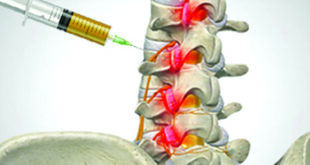Why Your Father’s Genes Could Be Playing a Role in Your Hair Loss
By Alan J Bauman, MD, ABHRS
Board-certified hair restoration physician
 Did you know that more than a third of men experience thinning hair by age 35, and half of all men are dealing with some hair loss by age 50?
Did you know that more than a third of men experience thinning hair by age 35, and half of all men are dealing with some hair loss by age 50?
That equates to tens of millions of men in America going bald.
You may be wondering why so many men experience hair loss.
A big factor is genetics.
Genetic hair loss
A common misconception about male hair loss is that it’s inherited from your mother’s side of the family. That’s only partly true because it’s now known that of the 200 “SNPs” (Single Nucleotide Polymorphisms aka “genes”) we inherit that affect our hair can also come from your father’s side. Or it could be a double whammy and come from both sides.
Most male pattern hair loss is believed to be due to a combination of genetics and hormones called androgens that play a role in male traits. The biggest androgen culprit is DHT dihydrotestosterone, which is made in various parts of the body from testosterone. In men with certain genetics, DHT causes hair follicles to progressively shrink and produce weaker, thinner, and shorter hair over time in a very predictable pattern. The result is Male Pattern Baldness, or in medical terms – Androgenetic Alopecia, which starts as a receding hairline and thinning in the crown and can result in the loss of all hair up top, sparing the sides and back of the scalp.
This doesn’t mean that a guy with male pattern hair loss has more testosterone or DHT than guys without hair loss, however. He’s just inherited sensitivity to DHT, and that causes his follicles to miniaturize in the typical pattern.
While you can’t undo the genetics causing your hair loss, today there are both invasive and non-invasive ways to encourage your hair to grow back or to stop or slow down hair loss.
More about that in a minute.
Testosterone replacement therapy
A common contributor to hair loss is testosterone replacement therapy. It’s growing in popularity among men because of its many benefits. It can increase energy, improve sex drive and reduce erectile dysfunction. It’s great for muscle mass, stamina, strength, and brain function. But it has risks when it comes to your hair.
Even without a severe genetic predisposition to male pattern hair loss, testosterone therapy might have hair loss side effects. Extra testosterone might end up converted to DHT and can accelerate an otherwise slow male pattern hair loss process. In other words, it can have the same hair loss effect as a man with a stronger genetic predisposition who isn’t doing testosterone therapy.
Fortunately, whether you’re wrestling with genetics, or an unwanted side effect of testosterone therapy, or both, there are things that can be done to help you avoid the same follicular fate as your father may have had.
Non-Invasive Hair Growth Options
Platelet Rich Plasma (PRP) with Extracellular Matrix (ECM) for Hair Growth
PRP is an in-office treatment that takes about an hour and has no recovery or downtime. A blood sample is obtained, platelets are separated from the other elements of the blood like red blood cells, concentrated, then applied into the scalp under painless local anesthesia, and followed by professional microneedling. When performed by a hair restoration specialist, the procedure is 100% painless because a local anesthetic ring-block is used. The infusion of a high density of platelets triggers hair growth through a release of powerful platelet-derived growth factors. ECM is added to the PRP to maximize the quality, strength, and duration of the PRP treatment so most patients treated with this method–PRP+ECM–typically need only one treatment per year instead of monthly visits.
PDOgro™
Performed within about the same time as a PRP treatment, PDOgro™ combines PRP with the use of thin, absorbable polydioxanone threads that are implanted painlessly into the scalp. PDO is an FDA-cleared synthetic absorbable material that stimulates endogenous collagen production, elastin, hyaluronic acid, new blood vessel formation, and fibroblast activity through a release of growth factors, synergizing with high-quality PRP, to stimulate hair regrowth that has been clinically shown to be more powerful and longer-lasting than PRP alone.
Exosome Therapy
Exosomes are tiny “packets” of powerful regenerative biosignals derived from adult stem cells in FDA-registered laboratories which are collected, purified, quantified, sterilized, and then provided to medical clinics for use. In a typical treatment, 30-50 billion exosomes are applied comfortably into the scalp under local anesthesia. There is no recovery or downtime associated with Exosome Therapy. Consistent hair growth measurements would determine how often the treatment would need to be repeated.
Compounded Formula 82M Minoxidil
A more powerful, non-greasy Rogaine or generic minoxidil alternative.
Compounded Formula 82F Topical
Finasteride + Minoxidil
Topical hair growth formula that blocks DHT production at the level of the follicle and reduces the risk of side-effects from oral finasteride (Propecia).
Low-Level Laser Therapy
The FDA-cleared Bauman “Turbo” LaserCap stimulates hair regrowth and is a highly portable cordless and rechargeable device for use at home. Improved hair growth can be achieved in only 5 minutes per day without drugs or side effects.
Vitamins and Nutraceuticals
Published peer-reviewed research supports the use of these supplements for hair growth, including SuperBiotin, Nutrafol & ViviscalPRO.
Non-surgical 3D-Printed Hair Systems or
Cranial Prostheses
Medical-grade hair and scalp prosthetics are more natural than traditional wigs, weaves, toupees, and extensions. They are created with 3D printing and 100% unprocessed human hair for a beautiful and customized short or long-term non-surgical hair replacement option.
Hair Loss Risk Management
We identify medical, lifestyle, and other risk factors that impact hair growth so you can make adjustments.
Hair Transplant Procedures
FUE (Follicular Unit Extraction)
No plugs, no rows, and no linear scar, FUE is an advanced minimally invasive method of harvesting DHT-resistant hair follicles directly from the sides and back of the scalp, as little as one follicle at a time without a scalpel incision or the need for sutures or staples. It replaces the older invasive method of “strip” or linear harvesting, aka FUT Follicular Unit Transplantation, which always left a long telltale linear scar to hide. FUE has a shorter, more comfortable, and less restricted recovery than a strip-harvest FUT procedure. Skillfully and artistically performed with the help of sophisticated robotic or mechanical/manual devices, FUE hair transplantation provides a permanent and undetectably natural result.
VIP|FUE™ No-Shave Long-Hair Preview
VIP|FUE is the most discreet hair transplant available. It has all the advantages of the traditional FUE but doesn’t require any trimming or shaving of the donor area and therefore no dramatic change in your hairstyle. It’s called a “preview” because it allows you to see the results of your transplant immediately after your procedure. VIP|FUE is a highly advanced, more difficult technical procedure that requires special skill and instrumentation, so treatment times and costs may be higher than traditional FUE.
As you can see, there are lots of options, so… if you’re a guy looking to “turn the clock back” on your hairline or crown or simply just prevent any further hair loss, connect with us today. We’ll give you straight answers about which of the many options are right for you.
Tips on Finding a Top Hair Restoration Physician
- A Top Hair Restoration Physician is someone who specializes exclusively in the medical diagnosis, treatment, and tracking of hair loss and hair regrowth, as well as the latest in hair transplantation procedures. A Top Hair Restoration Physician has typically been recognized by his peers and the industry as a pioneer, leader, expert, and educator in the field.
- Look for a full-time hair transplant surgeon who is certified by the American Board of Hair Restoration Surgery (ABHRS) and accepted by the International Alliance of Hair Restoration Surgeons (IAHRS).
- Avoid part-time or “non-core” cosmetic physicians/plastic surgeons who may offer multiple types of cosmetic procedures on their “menu,” but lack specific expertise, training, credentials, and experience in hair restoration.
- Due to the limited number of full-time, experienced ABHRS-certified hair restoration physicians worldwide, prospective patients should be prepared to travel and-or consult “virtually” via Zoom or FaceTime, etc. one-on-one with your doctor.
- Avoid the lure of coupons, discounts, or free consults when seeking cosmetic treatments or procedures, especially hair transplants. Consider if a surgeon offering a “Free Consultation” or “Rebate” truly has your best interest in mind.
- Before choosing your doctor, visit the clinic, read reviews, ask for before-and-after pictures, and most importantly, ask questions about how to achieve your desired results and what should be done to maintain them.
- Ask for a referral from your primary care doctor or dermatologist to a full-time Hair Restoration Physician who is fully equipped and trained to diagnose, treat and track your hair loss process and achieve your hair restoration goals.
Bauman Medical
Hair Restoration for Men and Women
www.baumanmedical.com
561-220-3480
 Central Florida Health and Wellness Magazine Health and Wellness Articles of the Villages
Central Florida Health and Wellness Magazine Health and Wellness Articles of the Villages



